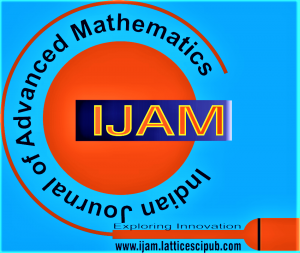![]()
Re-Evaluating the Value of π and Emerging New Concepts for Measuring Areas and Volumes Based on Translations and Rotations of Straight Lines, Planes, and Circles
Nishant Sahdev1, Chinmoy Bhattacharya2
1Nishant Sahdev, Department of Research & Development, Austin Paints & Chemicals Pvt. Ltd., Ambika Mukherjee Road, Belghoria, Kolkata (West Bengal), India.
2Chinmoy Bhattacharya, Department of Research & Development, Austin Paints & Chemicals Pvt. Ltd., Ambika Mukherjee Road, Belghoria, Kolkata (West Bengal), India.
Manuscript received on 06 October 2025 | Revised Manuscript received on 10 October 2025 | Manuscript Accepted on 15 October 2025 | Manuscript published on 30 October 2025 | PP: 81-94 | Volume-5 Issue-2, October 2025 | Retrieval Number: 100.1/ijam.A122506010426 | DOI: 10.54105/ijam.A1225.05021025
Open Access | Editorial and Publishing Policies | Cite | Zenodo | OJS | Indexing and Abstracting
© The Authors. Published by Lattice Science Publication (LSP). This is an open-access article under the CC-BY-NC-ND license (http://creativecommons.org/licenses/by-nc-nd/4.0/)
Abstract: The universal constant π has been assigned a nonconverging value of approximately 3.145…, and this non-repeating, non-terminating decimal extends to millions—even trillions—of digits beyond the decimal point, as calculated by the most advanced computational methods. However, for thousands of years, mathematicians across different civilizations have attempted to determine the value of this fundamental constant in various ways. In geometry, angles are commonly expressed in terms of π radians, and π appears prominently in the formulas used to calculate the areas and volumes of curved geometrical figures such as circles, ellipses, spheres, cones, pyramids, and cylinders. Thus, π has become an integral part of how we measure areas and volumes. Ancient scientists, in their efforts to understand and quantify the dimensions of curved or non-linear topological objects, sensed a recurring spatial constant underlying these forms. Over time, this invariant quantity came to be known as “pi.” The pursuit of its exact value has become a continuous endeavour spanning millennia, with each generation refining its estimation using increasingly sophisticated tools and methods. In this article, it is first emphasised that, although the mathematical parameters of area and volume have traditionally been expressed through formulas involving length, breadth, and height, their more profound physical significance has not been adequately explored. This work attempts to redefine area and volume fundamentally in terms of distance or length alone, offering new mathematical formulations for the areas and volumes of basic geometric shapes such as squares, cubes, circles, spheres, and others. Another critical shortcoming of conventional mathematics lies in its neglect of the reciprocal or inverse space of the universe when evaluating the value of π. In recent research, it has been proposed that π itself represents a circle whose radius corresponds to the smallest conceivable length in the universe. Furthermore, the existence of an inverse π—always in conjugation and equilibrium with π—is posited as essential for maintaining the balance of forces in the universe. Accordingly, this article presents a novel derivation of π by simultaneously considering both the cosmos’ direct space and the reciprocal (or inverse) space.
Keywords: Pi (π), Reciprocal Geometry, Area and Volume Redefinition, Geometric Constants, Cosmological Geometry, non-Converging, Planck Length
Scope of the Article: Algebra
